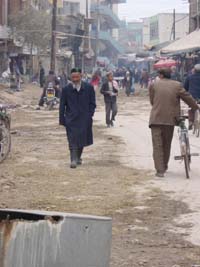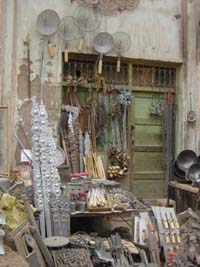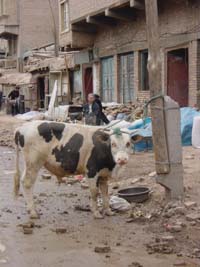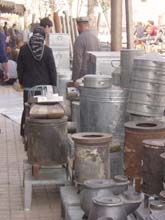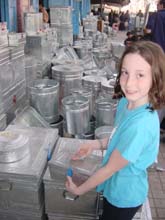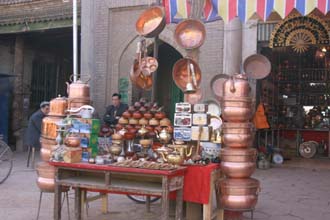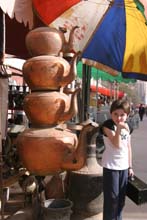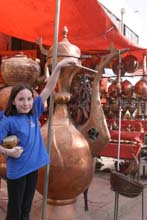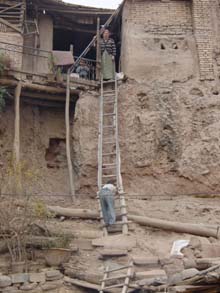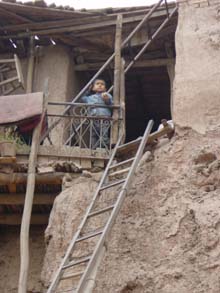| Kashgar’s old city is famed for its
warren of stone streets, teetering, multi-storied mud houses, and lively
commerce. In the years since Tom’s first visit, a more modern city
of Chinese white tile has grown up around it, and parts of the city have
been torn down, but the core of it remains and will likely continue to do
so for many years to come.
One reason is that many Uighur families who have lived there for generations
refuse to move out to spacious, clean but soulless apartment buildings
on the outskirts of town. Another is that the Chinese themselves have
realized (according to our ethnically-Chinese tour guide, Miss Wu) that
the old city is a big draw for tourists; without it, Kashgar’s attractions
are pretty much the mosque, the bazaar (now cleaned up and enclosed ,
as you’ll see shortly) and a pile of rubble in the desert that has
some historical significance (we don’t know exactly what –
we didn’t bother to check it out).
Winding our way through the streets of the old city, we found all kinds
of wares on offer, and busy craftsmen making and mending:
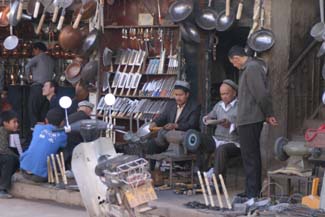 |
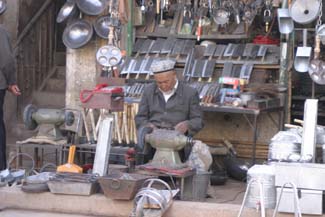 |
| Tom braved flying wood chips
and bought a few handmade wooden tools for making bread from a man
in a string of small shops running lathes and making all kinds of
tools and handles. |
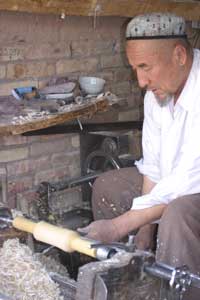 |
Meanwhile, along, a narrow street of copper
and tinsmithsthe, the girls checked out the galvanized ironware, and did
“I’m a Little Teapot” with some very BIG teapots:
Later in the day, the girls took a rest at
the hotel while Tom and I went back to the mud-walled streets to visit
a bowl-maker whom our tour guide knew. We came during the mid-afternoon
prayer break, so the man of the house was at the mosque, but his wife
showed us their ceramic wares and gave us a tour of their multi-story
house:
Once inside the mud house, we could understand
why old city residents were reluctant to relocate, even to more modern
facilities. Despite being rickety, the house had ample stove heating,
a clean, odor-free privy (contents dropped down several stories), and
plenty of room for sheep (kept upstairs!), their kiln, and any number
of relatives. Using mud and straw makes it easy to build up, tear down,
and reconfigure the rooms, and the house had easily five or six times
the square footage of the brand-new, vacant apartments we had seen just
outside the city.
Our next stop -- the new bazaar building -- amply demonstrated the advantages
and disadvantages of the move from old to new.
|
